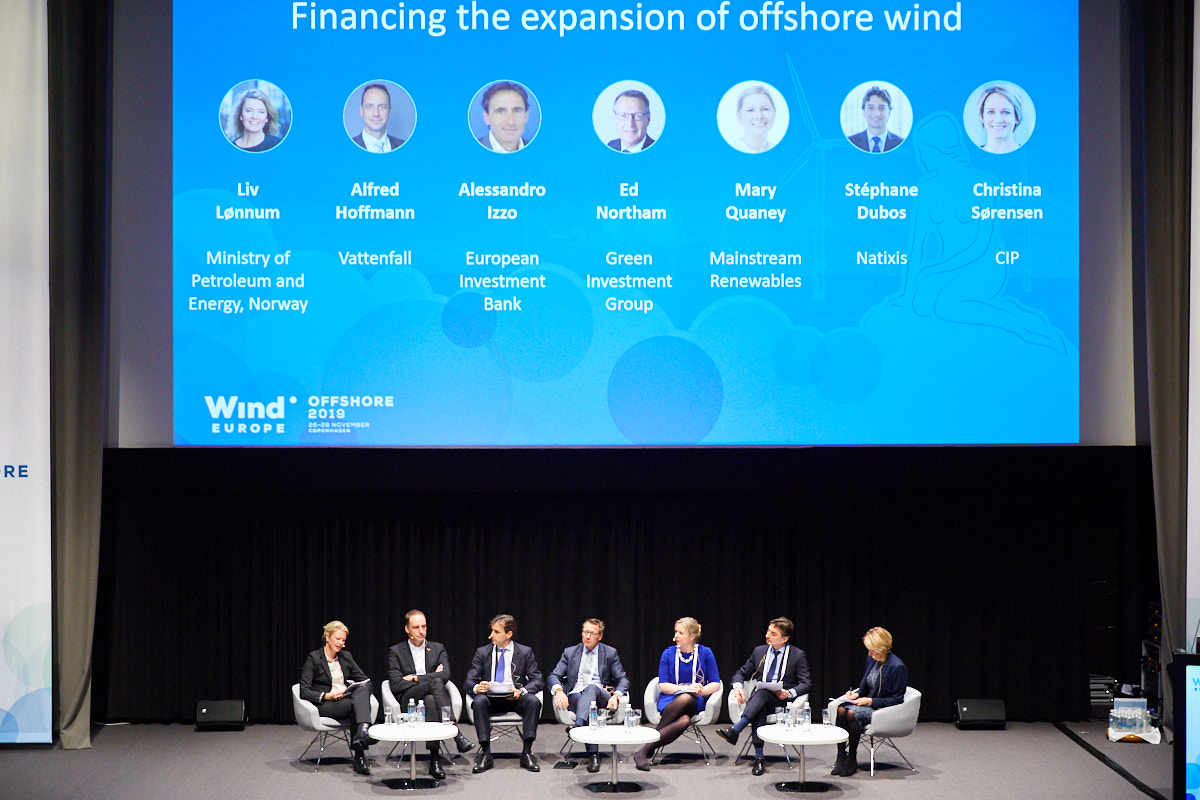High Capital Costs Jeopardize Offshore Wind Farm Investments

Table of Contents
The Steep Cost of Offshore Wind Farm Development
The high capital expenditure involved in offshore wind projects is a multifaceted problem. Several factors contribute to the substantial investment needed, making these projects considerably more expensive than their onshore counterparts. These include:
-
High costs of wind turbine technology and manufacturing: Offshore wind turbines are larger and more robust than their onshore counterparts, requiring specialized materials and advanced manufacturing techniques. This translates to significantly higher manufacturing and transportation costs. The ongoing research and development required to improve turbine efficiency further contributes to the overall cost.
-
Significant expenses related to offshore installation: Installing wind turbines in the marine environment demands specialized vessels, heavy-lift equipment, and highly skilled personnel. The challenging offshore conditions, including unpredictable weather and sea states, increase the risk and complexity of installation, driving up costs. This also includes the cost of maintaining and servicing these turbines, which is significantly higher than onshore operations.
-
The substantial investment needed for grid connection infrastructure: Connecting offshore wind farms to the onshore electricity grid often necessitates lengthy underwater cable laying. This involves specialized cable-laying vessels, trenching operations, and complex subsea infrastructure, adding considerable expense to the project. Grid upgrades are often necessary to handle the influx of electricity from offshore wind farms, further impacting costs.
-
Extensive site surveys, environmental impact assessments, and permitting processes: Developing offshore wind farms requires extensive site surveys to assess suitability, detailed environmental impact assessments to minimize ecological disruption, and navigating complex permitting processes which can take considerable time and money. Regulatory hurdles and bureaucratic delays also contribute to overall project costs.
-
Inflation and supply chain disruptions: Recent global economic instability, marked by high inflation and disruptions to supply chains, have significantly impacted the cost of materials and labor, further exacerbating the already high capital expenditure for offshore wind projects.
Financing Challenges and Investment Risks
The high upfront capital requirements for offshore wind projects pose significant financing challenges. Securing adequate funding is crucial for project viability, yet several factors hinder investment:
-
The long payback period and associated financial risks deter investors seeking quicker returns: Offshore wind projects typically have a long lead time before they start generating revenue, making them less attractive to investors who prioritize shorter-term returns. The inherent risks associated with offshore operations, such as storms and equipment failures, also contribute to investor hesitancy.
-
Competition for limited investment capital within the renewable energy sector: The renewable energy sector is attracting significant investment, but competition for funds remains fierce. Offshore wind projects, with their higher capital costs, may face more difficulties in securing financing compared to other renewable energy options.
-
Dependence on government subsidies and supportive policy frameworks to make projects financially viable: Government subsidies, tax credits, and other supportive policies are often essential to making offshore wind projects financially attractive to investors. Changes in government policies or a reduction in subsidies can significantly impact project viability.
-
The importance of securing robust Power Purchase Agreements (PPAs) to guarantee a stable revenue stream: Power Purchase Agreements (PPAs) are crucial for securing a long-term revenue stream for offshore wind farms. Negotiating favorable PPAs with off-takers is essential for mitigating financial risks and attracting investors.
-
Exploring innovative financing models and risk mitigation strategies: Innovative financing models, such as crowdfunding, green bonds, and blended finance, are gaining traction in the renewable energy sector. Exploring and implementing these strategies alongside robust risk mitigation plans is crucial for attracting diverse sources of capital.
Impact on the Energy Transition and Potential Solutions
High capital costs pose a significant threat to achieving ambitious renewable energy targets and ensuring energy security. The implications are far-reaching:
-
The potential for slower deployment of offshore wind farms, hindering progress toward decarbonization goals: The high cost of offshore wind farms could significantly slow down their deployment, hindering the progress towards achieving national and international decarbonization targets.
-
The need for technological advancements to reduce the cost of turbines and installation processes: Technological advancements are crucial for reducing the cost of offshore wind energy. This includes developing more efficient and cost-effective wind turbines, improving installation techniques, and optimizing grid connection infrastructure.
-
The role of supportive government policies, including tax incentives and streamlined permitting processes: Supportive government policies, such as tax incentives, streamlined permitting processes, and stable regulatory frameworks, are crucial for creating a favorable investment climate for offshore wind projects.
-
Exploring economies of scale through larger projects and standardized designs: Larger projects and standardized designs can lead to economies of scale, reducing the overall cost per unit of energy produced. This could make offshore wind farms more competitive with other energy sources.
-
The importance of fostering collaboration between industry stakeholders, governments, and research institutions: Strong collaboration between industry stakeholders, governments, and research institutions is vital for driving innovation, reducing costs, and accelerating the deployment of offshore wind farms.
Conclusion
High capital costs represent a major obstacle to the widespread adoption of offshore wind energy. Addressing these challenges requires a multi-pronged approach encompassing technological innovation, supportive government policies, and efficient financing mechanisms. Failure to tackle these issues could significantly impede the energy transition and delay the realization of a sustainable energy future.
Investing in innovative solutions and creating a supportive regulatory environment are crucial to mitigating the impact of high capital costs and unlocking the full potential of offshore wind farm investments. Let's work together to overcome these challenges and accelerate the transition to a cleaner energy future.

Featured Posts
-
 The Importance Of Mental Health Literacy Education In Schools And Communities
May 03, 2025
The Importance Of Mental Health Literacy Education In Schools And Communities
May 03, 2025 -
 Recent Developments Nigel Farage And Reform Uks Political Impact
May 03, 2025
Recent Developments Nigel Farage And Reform Uks Political Impact
May 03, 2025 -
 Manfaatkan Limbah Cangkang Telur Petunjuk Praktis Untuk Meningkatkan Produktivitas Tanaman Dan Kesehatan Hewan Peliharaan
May 03, 2025
Manfaatkan Limbah Cangkang Telur Petunjuk Praktis Untuk Meningkatkan Produktivitas Tanaman Dan Kesehatan Hewan Peliharaan
May 03, 2025 -
 Astwl Alhryt Lghzt Tfasyl Alhjwm Alisrayyly Walntayj
May 03, 2025
Astwl Alhryt Lghzt Tfasyl Alhjwm Alisrayyly Walntayj
May 03, 2025 -
 Finding Your Dream Home A Practical Guide To Buying A Place In The Sun
May 03, 2025
Finding Your Dream Home A Practical Guide To Buying A Place In The Sun
May 03, 2025
